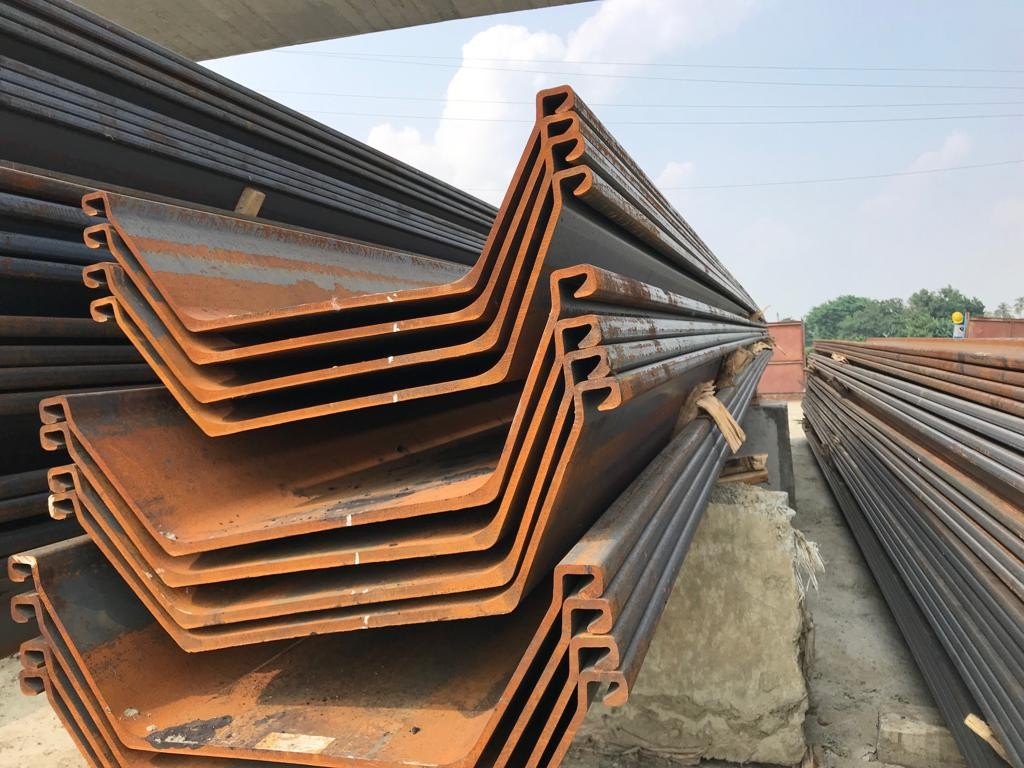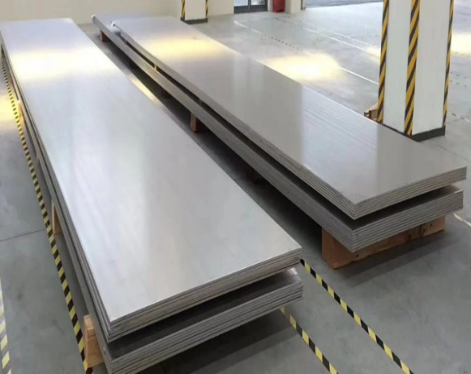With the development of urbanization, anchored geostructures are increasingly needed in construction projects. Steel sheet piles, as a commonly used geostructural material, have a wide range of applications. In the design of steel sheet piles, attention must be paid to the influence of various engineering factors to ensure the safety and stability of steel sheet piles. This article will introduce the design method of steel sheet piles.
1.Soil layer analysis
Steel sheet piles have different requirements for the applicability of different types of soil layers. Specifically, there are the following aspects that need attention:
(1)Soil type
Soil layers are divided into three categories, namely hard soil layer, medium hard soil layer and soft soil layer. Different soil types require steel sheet piles of different strengths. Generally speaking, hard soil layers do not need to use too thick steel sheet piles, while for soft soil layers, thicker steel sheet piles need to be used.
(2)Soil water level
The height of the soil water level also has a great influence on the design of steel sheet piles. In areas with high groundwater levels, a clay soil layer is required, and a single pile embedded design in the clay soil layer will be more appropriate.
(3)Soil type
Different soil types also have an impact on the penetration resistance of steel sheet piles. For example, in soils rich in stones and other hard materials, advanced pile driving methods can better adapt to local soil conditions.

2. Design of steel sheet piles
In the design of steel sheet piles, the following factors need to be considered:
(1) Overlap stress
The overlap stress of steel sheet piles refers to the shear force between adjacent sheet piles along the length direction of the steel sheet piles. In the design process of steel sheet piles, it is necessary to reasonably select the calculation method of lap shear force. At present, the method of combining mathematical models and experimental data is more scientific.
(2)Longitudinal gap
There should be a certain gap at the top and bottom of each steel sheet pile to enhance the bending stiffness of the steel sheet pile during the stressing process of the pile and at the same time reduce the shear force brought to the steel sheet pile.
(3) Web protection
The web of the steel sheet pile is its thinnest part, so protective measures need to be taken during design and use to ensure its stability. Generally speaking, when designing steel sheet piles, methods such as installing supporting spare alloy wires, adding seaweed or oxidized angle iron will be considered.
3. Installation and maintenance
Steel sheet piles not only require strict design, but also require professional operation and maintenance during implementation and use. When installing and using steel sheet piles, you need to pay attention to the following points:
(1) Use appropriate mechanical equipment and tools
During the installation and maintenance of steel sheet piles, it is very important to use appropriate mechanical equipment and tools to avoid safety accidents. At the same time, it is necessary to strictly abide by safety regulations and operating procedures during the installation and maintenance of steel sheet piles.
(2)Steel sheet pile maintenance
Steel sheet piles that have been used for a long time should be anti-corrosion,maintained and inspected regularly to ensure that their surfaces are smooth and prevent rust. Damaged or deformed steel sheet piles must be replaced in time to avoid damage to the structure.
In short, steel sheet pile is a highly professional geostructural material. This article introduces various aspects that need to be paid attention to in its design, installation and maintenance. In order to ensure the safety and stability of the project, we must pay attention to all aspects of it to complete an efficient and reliable building structure.
1.Soil layer analysis
Steel sheet piles have different requirements for the applicability of different types of soil layers. Specifically, there are the following aspects that need attention:
(1)Soil type
Soil layers are divided into three categories, namely hard soil layer, medium hard soil layer and soft soil layer. Different soil types require steel sheet piles of different strengths. Generally speaking, hard soil layers do not need to use too thick steel sheet piles, while for soft soil layers, thicker steel sheet piles need to be used.
(2)Soil water level
The height of the soil water level also has a great influence on the design of steel sheet piles. In areas with high groundwater levels, a clay soil layer is required, and a single pile embedded design in the clay soil layer will be more appropriate.
(3)Soil type
Different soil types also have an impact on the penetration resistance of steel sheet piles. For example, in soils rich in stones and other hard materials, advanced pile driving methods can better adapt to local soil conditions.

2. Design of steel sheet piles
In the design of steel sheet piles, the following factors need to be considered:
(1) Overlap stress
The overlap stress of steel sheet piles refers to the shear force between adjacent sheet piles along the length direction of the steel sheet piles. In the design process of steel sheet piles, it is necessary to reasonably select the calculation method of lap shear force. At present, the method of combining mathematical models and experimental data is more scientific.
(2)Longitudinal gap
There should be a certain gap at the top and bottom of each steel sheet pile to enhance the bending stiffness of the steel sheet pile during the stressing process of the pile and at the same time reduce the shear force brought to the steel sheet pile.
(3) Web protection
The web of the steel sheet pile is its thinnest part, so protective measures need to be taken during design and use to ensure its stability. Generally speaking, when designing steel sheet piles, methods such as installing supporting spare alloy wires, adding seaweed or oxidized angle iron will be considered.
3. Installation and maintenance
Steel sheet piles not only require strict design, but also require professional operation and maintenance during implementation and use. When installing and using steel sheet piles, you need to pay attention to the following points:
(1) Use appropriate mechanical equipment and tools
During the installation and maintenance of steel sheet piles, it is very important to use appropriate mechanical equipment and tools to avoid safety accidents. At the same time, it is necessary to strictly abide by safety regulations and operating procedures during the installation and maintenance of steel sheet piles.
(2)Steel sheet pile maintenance
Steel sheet piles that have been used for a long time should be anti-corrosion,maintained and inspected regularly to ensure that their surfaces are smooth and prevent rust. Damaged or deformed steel sheet piles must be replaced in time to avoid damage to the structure.
In short, steel sheet pile is a highly professional geostructural material. This article introduces various aspects that need to be paid attention to in its design, installation and maintenance. In order to ensure the safety and stability of the project, we must pay attention to all aspects of it to complete an efficient and reliable building structure.









